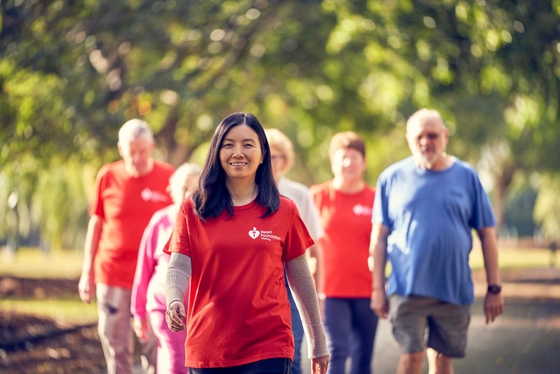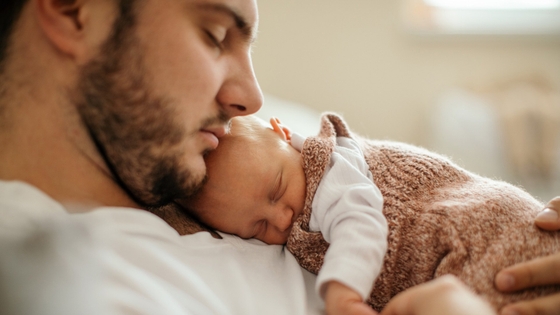
Let’s get physical: Busting 5 common myths about exercise
We know it, you know it, your dog knows it, everyone knows it. Exercise is good for our mind, body and our social lives.
At the Heart Foundation, we love getting moving each day, in any way we can. Every step, squat, skip and jump counts and starting small is absolutely fine.
Whether you’re wondering how to start, wanting to get back into an active routine, or are a long-time workout warrior, read on as we flex our muscle to tackle some common myths about getting and staying active.
Busted myth #1: You can get back to exercise safely after having COVID-19
COVID-19 has taken a lot from us over the past couple of years. If you’re one of the three million Australians who has had the virus, you might still not be feeling quite back to your usual self. We’re hearing that some people who have had COVID-19 have found it difficult to get back into exercise, even after they’ve recovered from their initial illness.
While there’s no one-size-fits-all approach to starting exercise again after COVID, it’s important to follow these three key principles:
Give yourself a break. This means waiting until you’ve had at least seven days without any COVID-19 symptoms before doing any type of physical activity. If your symptoms are lasting longer than this, it’s best to speak to your doctor.
Start slow. Your body has been through a lot so don’t put pressure on yourself to jump straight back into your normal routine. Start with simple activities like a gentle stroll around the block or some light gardening. Gradually build up to your usual exercise and activities.
Ask yourself – is this normal for me? For example, while riding your bike, it might be completely normal for you to feel a little short of breath or have trouble talking in full sentences. But if this is new for you since recovering from COVID-19, it’s best to check in with your doctor.
We already know physical activity boosts the immune system, and there’s exciting new research that suggests being active might protect against severe COVID-19 illness and could even enhance the immune response to COVID-19 vaccination.
Busted myth #2: When it comes to workout wear, it’s all about how you feel
Nope, you don’t need high-tech runners with all the bells and whistles to get moving. When it comes to exercising, comfort is key. Focus on wearing whatever makes you feel the most comfortable for the activity you’re doing. When it comes to activities that require you to be on your feet, like walking, opt for comfortable shoes with good support. You don’t need anything fancy.
It's true though that some new gear can kick start your motivation to move more. Check out some of our latest threads in our online shop.
Busted myth #3: Exercise can help with sleep…it’s all about timing
Ever noticed you sleep better on days when you’ve done some physical activity? It’s thought that moving more can help improve the quality of your sleep and can also help to relieve stress.
For some people, timing their exercise session with their bedtime is important. Depending on the activity, exercising too close to your bedtime can mean your body is still too ‘awake’ from exercise. Your endorphin levels can take a while to return to normal, as can your core body temperature.
If this sounds familiar, try having at least a one hour break between exercising and hitting the hay.
Busted myth #4: You don’t need to (protein) shake it up to get stronger
We’ve all seen it; people leaving the gym sipping on a protein shake. While it’s true consuming protein immediately after exercise can help to build muscle, did you know that actually one of the best ways to do this is with muscle-strengthening exercises?
And you don’t need to have protein supplements or shakes (which can be expensive and contain a lot of added kilojoules) to fuel your muscles and give you enough energy to do the activities you want.
Instead, focus on these nutritious and delicious top tips:
Keep your fluids up during and after exercise! Water is always your best bet. Make it more exciting by adding some chopped fruit or mint.
Feel fuller for longer with heart-healthy protein-rich snacks like a tub of unflavoured yoghurt, a hardboiled egg, a handful of unsalted nuts or vegetable sticks with hummus.
Why not try our refreshing Green Power smoothie or our zesty Mighty Mango smoothie?
Busted myth #5: Walking has just as many health benefits as running
Running is a bit like coriander. People either love it or hate it. Walking, on the other hand, is like an avocado. It’s a crowd-pleaser and there’s lots of ways to jazz it up to keep things interesting.
But which one is better for you? The good news is both have excellent health benefits; it all depends on what you enjoy. Both are considered types of activities that keep your heart strong, help you maintain a healthy weight and boost your fitness and energy levels.
It’s true that running will generally burn more energy (kilojoules) than walking when you compare them over the same time period. But some people like a short run while others like a long walk. So, it’s like comparing apples and oranges.
Don’t forget you can also increase the intensity of your walks by mixing things up a bit:
Include hills on your walking route
Increase how fast you walk
Try walking on sand
Sign up to a challenge, like My Marathon, where you pledge to walk 42.2km over a month! Sign up here.
Whether you like to do it alone, in a group or with your pooch, walking is a great exercise option for most people. Check out Heart Foundation Walking today and sign up for a Personal Walking Plan or join a local walking group.
You might also be interested in...

Keep your heart healthy
Keeping your heart healthy is something you can work on every day.

Heart Foundation Walking
Our program is Australia’s largest free walking network, and offers Australians multiple ways to walk with us.

4 essential jobs your body does while you sleep
On average, humans spend about one third of our lives asleep. That might seem like a lot of time to dedicate to snoozing, but it may actually be one of the most productive things you do!
Last updated10 December 2024
Last reviewed09 March 2024